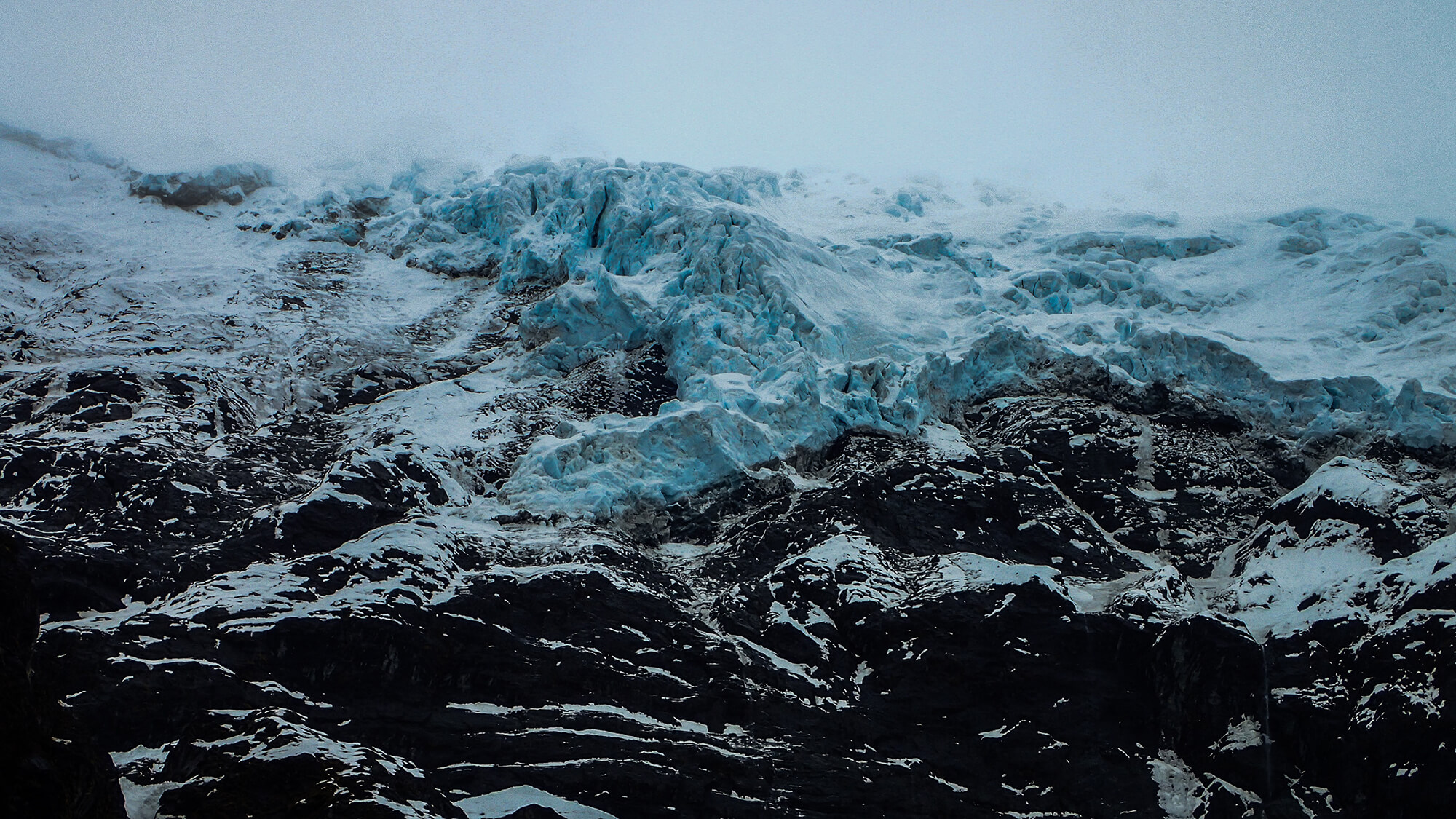Glaciers (I think) are one of nature’s most impressive features, showcasing the power of ice and snow over time.
Essentially, glaciers are large masses of ice that move very (very!) slowly. Typically glaciers move about 20-25cm per day on average, but some shift faster than 20m, especailly if they are on steep terrain with lots of temperature fluctuations during the day.
What is a Glacier?
Simply speaking, a glacier is a massive, slow-moving river of ice. These ice rivers form from layers of snow falls and accumulates over many years, compressing into thick ice layers. As more snow falls and compacts, the ice begins to flow and reshape the landscape and at the end of the glacier (the snout) the meltwater appears at the bottom and feeds into rivers and lakes below.
Glaciers move because of their own weight and the force of gravity, and slowly flow downhill like very thick, slow rivers.
Two Main Types of Glaciers in New Zealand
- Alpine glaciers: These are usually found in mountainous areas like that of Kā Tiritiri o te Moana / The Southern Alps. These types of glaciesr move down valleys, carving out U-shapes out of the underlying rocks, whilst also creating other unique landforms like a roche moutonnée amongst others.
- Ice sheets/plateaus: These cover large areas of land and are usually spread from a central point and join onto many alpine glaciers on their way flowing off the edge of the sheet. Ice sheets also often cover mountain ranges underneath their sheet. Some examples of ice sheets are The Gardens of Eden and Garden of Allah in Te Waipounamu / South Island.
Aotearoa New Zealand is particularly famous for it’s alpine glaciers. It’s high mountains and cool yet wet climate in Kā Tiritiri o te Moana / The Southern Alps make it a usual place for glaciers to form and thrive. These glaciers, found mostly in the Southern Alps on the South Island, are relatively easy to access and are popular spots for tourists and scientists alike.
Are glaciers important?
Glaciers are not just stunning geographical nerd material (my inner monologue talking! they are very important for the environment as they store large amounts of fresh water and release it slowly as they melt, feeding the lower rivers and lakes. This is specifically crucial in places like Waitaha / Canterbury, as meltwater is crucial for agriculture or in Manawatū-Whanganui where the rivers are used for hydroelectric power – let alone the whole of the country (where possible) it is used for drinking water.
Glaciers also help scientists understand climate change, as their size and movement can indicate changes in global temperatures – hence this project being in existence!
Keen to know more? Find any glacier from across Aotearoa New Zealand or find out more about the Glacialist project.

